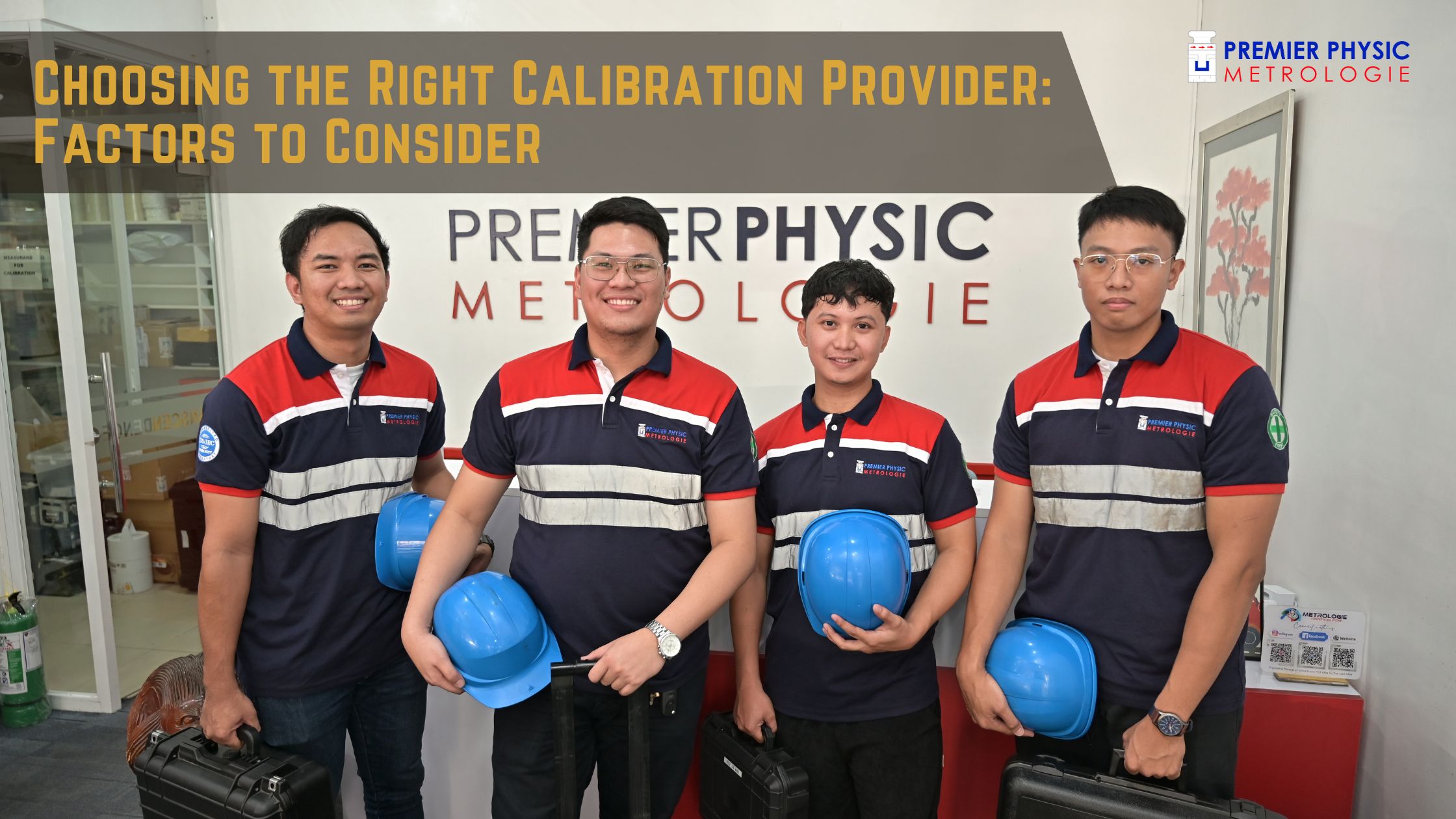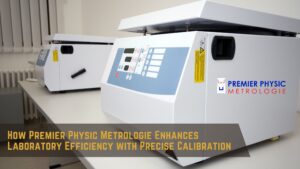Introduction
Calibration is crucial for ensuring the accuracy and reliability of instruments and equipment across various industries. The process involves comparing measurements from an instrument to a standard of known accuracy and adjusting the instrument to align with this standard. Selecting the right calibration provider is a critical decision that can significantly impact the quality and efficiency of your operations. This article delves into the factors to consider when choosing a calibration provider, offering comprehensive insights to guide your decision-making process.
The Importance of Calibration
Definition and Overview
Calibration is the process of configuring an instrument to provide a result for a sample within an acceptable range. It ensures that measurements are consistent with other measurements, traceable to international standards.
Relevance to Industries
Calibration is vital in industries such as healthcare, manufacturing, aerospace, and telecommunications, where precise measurements are essential for safety, quality, and compliance.
Ensuring Accuracy and Compliance
Proper calibration ensures that instruments provide accurate readings, which is crucial for maintaining product quality, safety standards, and regulatory compliance.
Key Factors in Choosing a Calibration Provider
Accreditation and Certification
- Importance of Accreditation: Ensure the provider is accredited by recognized bodies (e.g., ISO/IEC 17025) which indicates competence in calibration services.
- Certification Standards: Verify that the provider adheres to relevant standards and possesses necessary certifications.
Range of Services
- Comprehensive Service Offerings: Look for providers offering a broad range of calibration services for various instruments.
- Specialized Services: Identify if the provider offers specialized calibration services for specific industries or equipment.
Experience and Expertise
- Industry Experience: Providers with extensive experience in your industry are likely to understand specific requirements and challenges.
- Technical Expertise: Assess the technical skills and qualifications of the provider’s staff.
Turnaround Time
- Service Speed: Evaluate the provider’s turnaround time and ensure it meets your operational needs.
- Express Services: Some providers offer expedited services for urgent calibration needs.
Cost and Value
- Pricing Structure: Compare costs and understand the pricing structure. Beware of hidden fees.
- Value for Money: Consider the overall value, including service quality, expertise, and additional benefits.
Customer Service
- Support and Assistance: Good customer service is crucial. Check the availability and responsiveness of support.
- Client Feedback: Look for reviews and testimonials from other customers to gauge satisfaction levels.
Quality Assurance
- Accuracy Guarantees: Providers should guarantee the accuracy of their calibration services.
- Documentation: Ensure the provider offers detailed calibration certificates and documentation for compliance purposes.
Equipment and Technology
- Advanced Tools: Providers using the latest calibration tools and technologies are likely to offer more precise services.
- Maintenance and Updates: Regular maintenance and updates of calibration equipment are essential for accuracy.
Geographical Reach
- Local vs. Global Providers: Decide if you need a local provider for convenience or a global one for broader service capabilities.
- On-Site Services: Some providers offer on-site calibration, which can save time and reduce downtime.
Flexibility and Customization
- Tailored Services: Providers offering customizable calibration services can better meet specific needs.
- Contract Flexibility: Flexible contracts and service agreements are beneficial for long-term partnerships.
Calibration Process Overview
Initial Assessment
- Instrument Evaluation: Assess the condition and specifications of the instrument to determine calibration requirements.
- Calibration Plan: Develop a detailed plan outlining the calibration process.
Calibration Procedure
- Standard Comparison: Compare the instrument’s readings to a known standard.
- Adjustments and Corrections: Make necessary adjustments to align the instrument with the standard.
Verification and Validation
- Post-Calibration Checks: Verify the accuracy of the instrument after calibration.
- Validation Reports: Provide detailed reports validating the calibration process and results.
Benefits of Proper Calibration
Enhanced Accuracy
- Precision Measurements: Ensures precise measurements, reducing errors and improving product quality.
- Reliability: Increases the reliability of instruments, enhancing overall operational efficiency.
Regulatory Compliance
- Adherence to Standards: Helps meet regulatory standards and avoid non-compliance penalties.
- Audit Readiness: Ensures your instruments are always ready for inspections and audits.
Cost Savings
- Preventative Maintenance: Regular calibration can prevent costly repairs and replacements.
- Operational Efficiency: Improves efficiency by reducing downtime and enhancing productivity.
Common Calibration Challenges
Inadequate Calibration
- Insufficient Frequency: Calibrating instruments less frequently than required can lead to inaccuracies.
- Improper Methods: Using incorrect calibration methods can compromise measurement accuracy.
Environmental Factors
- Temperature and Humidity: Environmental conditions can affect calibration results.
- Contamination: Dust and other contaminants can interfere with calibration accuracy.
Instrument Wear and Tear
- Aging Equipment: Older instruments may require more frequent calibration.
- Physical Damage: Instruments subjected to physical stress may need recalibration more often.
Preventive Measures and Best Practices
Regular Calibration Schedule
- Routine Checks: Implement a regular calibration schedule to maintain accuracy.
- Documentation: Keep detailed records of all calibration activities.
Proper Handling and Maintenance
- Instrument Care: Proper handling and maintenance can extend the life of instruments and reduce the need for frequent calibration.
- Environmental Controls: Control environmental factors to minimize their impact on calibration.
Case Studies and Success Stories
Healthcare Industry
- Medical Devices: Discuss a case where regular calibration improved the accuracy of medical devices, leading to better patient outcomes.
- Laboratory Equipment: Highlight a laboratory that achieved compliance and efficiency through consistent calibration practices.
Manufacturing Sector
- Production Line Efficiency: Showcase how a manufacturing company enhanced product quality and reduced downtime with effective calibration.
- Cost Reduction: Provide an example of significant cost savings achieved through regular calibration and maintenance.
Expert Insights
Interviews with Calibration Experts
- Technological Advances: Discuss recent advancements in calibration technology and their impact on various industries.
- Best Practices: Share expert tips on best practices for calibration and instrument maintenance.
Industry Trends
- Future of Calibration: Explore emerging trends in calibration and what the future holds for this field.
- Regulatory Changes: Highlight potential regulatory changes and their implications for calibration services.
Conclusion
Choosing the right calibration provider is essential for ensuring the accuracy, reliability, and compliance of your instruments. By considering factors such as accreditation, experience, turnaround time, cost, and customer service, you can make an informed decision that meets your operational needs. Regular calibration and proper maintenance not only enhance measurement precision but also contribute to cost savings and regulatory compliance. Stay informed about industry trends and advancements to continuously improve your calibration practices and maintain high standards of quality and efficiency.




